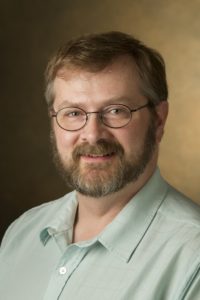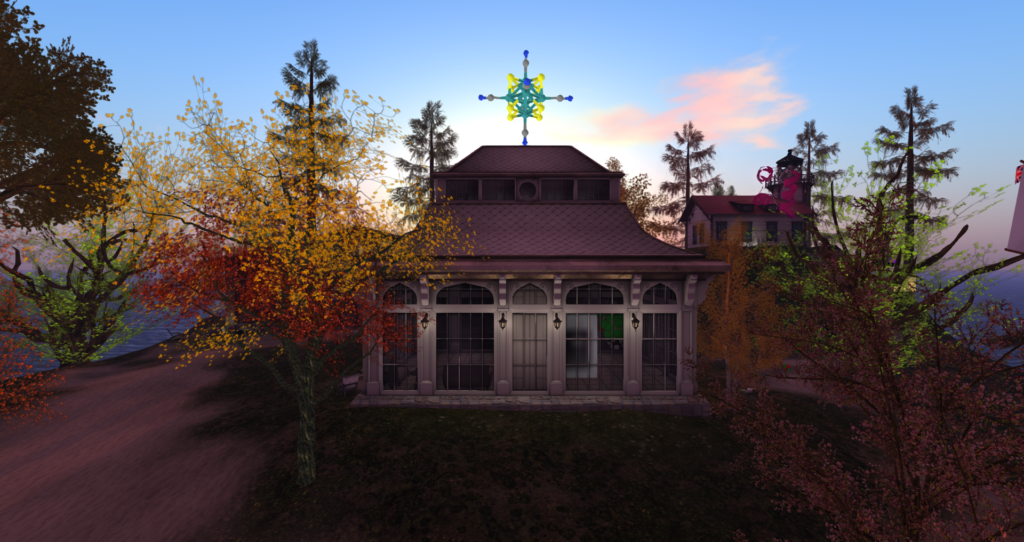Special thanks to Chantal and Jes for setting up this corner of the SC sim with buildings, comfy places to sit and other attractive features. Feel free to hang out with the cats.
The area features objects built for talks I’ve given during the past couple of years during the Science Circle’s (SC) regular lecture series. More information about the SC is available on the website, including links to the YouTube recordings of recent talks (https://sciencecircle.org/). I have also posted content from my talks at https://dpa-llc.com/chemjs , including links to the source material, and software used to create the objects. I am grateful to dpa-llc for hosting this content, to which other educators are welcome to link to.
The exhibits in this area highlight how atomic and molecular orbitals influence observed chemistry, and provide examples of how experimentally-determined structures can be easily translated into accurate models in virtual worlds. Most of the exhibits are labelled and will give you a notecard with more details when you click on them. While the exhibits rotate, especially when I’m developing content for a talk, the current sights include:
- The starting point of our tour! You are invited to chill in the ice house, where a few examples are shown of the many different structures of ice which form under conditions of high pressures and a range of temperatures.
- In the potting shed, you’ll see the interactions that allow a transition metal to break H-H (and many other) bonds.
- In the greenhouse, you’ll see some structures of silicon and boron compounds, in addition to various p-orbitals from the 2nd, 3rd, and 4th rows of the periodic table. Above the greenhouse, a pretty structure of a technetium cyanide cluster floats.
- There are rotating stereograms views of molecular structures here and there… look for the wooden panels. If they are blank, enable media for a while. They are designed so that if you cross your eyes and look at them, you will see them in 3D. Don’t strain your eyes! Not everyone can see them in 3D, so it is OK if you just look at a panel normally.
- On the way up to the lighthouse, there is an electron-density map of the heme group from human nitric oxide synthase… it looks like the Millennium Falcon. Underneath it there is a cross eyed stereogram of an iron-cluster from a bacterial nitrogenase enzyme. Often, the functions of such complicated molecules can be understood by the properties of their components… nearby are molecular orbital representations of how the nitrogen molecule can be bound to a transition metal, ultimately resulting in its transformation into something else.
- Inside the lighthouse, the molecular orbital diagram for O2 and F2 shows the power of the virtual world to deconvolute a complicated textbook 2D diagram into a 3D representation which shows head-on vs. sideways bonding more clearly.
- On the way down from the lighthouse, next to the HMS Beagle (which fires its cannons occasionally, watch out!) there is a cartoon model of insulin, a short protein. There are also panels with rotating views of DNA bound to the DNA polymerase protein… this structure is special because it shows how cis-platin (an anticancer drug) can bind to two adjacent rungs of the DNA ladder.
- The last stop on the tour is the studio. Outside the studio is a demonstration that I have recorded and played for my advanced inorganic chemistry class for 2 years. There are representations of the 5 types of d-orbitals in transition metals. There are two boxes. The one with spheres in all six faces represents an octahedral environment. The box with 4 spheres at opposite corners represents a tetrahedral environment, and is a convenient way for students to remember how to map x,y,z axes onto a tetrahedral object. The spheres on the boxes represent other atoms that the metal bonds to. The d-orbitals break into two groups, orbitals that point directly at the spheres on the boxes, and orbitals that point in between. Orbitals that point directly at the spheres are raised in energy, so the act of imposing an environment on the metal yields two groups of orbitals. The separation of these groups explains the magnetic properties, spectroscopic properties, bonding, elements of structure, and much of the reactivity of the final metal complexes. These considerations give us “Crystal Field Theory”, which among other things explains why gemstones have their colors. Bonus question… is the grouping of the orbitals shown accurate for the tetrahedral or the octahedral arrangement? Hint: orbitals which point directly at the spheres on the box are higher in energy. The boxes have been set so anyone can move them.
- Finally, inside the studio are two structures. The blue structure is a ruthenium-porphyrin-NO complex, a model for some of the heme-NO complexes seen elsewhere in the exhibit. Such molecules allow us to figure out more about biologically relevant molecules by contrasting the similarities and differences in properties due to structure. The second structure is a fanciful depiction of how two layers of a silicate can trap a metal in an octahedral environment.

My own work at Southern Illinois University Edwardsville combines teaching and research. My research is on metal-porphyrin-NO and related structures, a collaborative project with the University of Oklahoma, funded by NSF (to which we are grateful for funding). We make the compounds and evaluate their reactivity by electrochemical and spectroelectrochemical methods. We have had to develop tools to do some of this work, which links into the outreach side of the research, which is to bring better data collection and analysis tools to students and other scientists. To that end, a collaborator and I have partnered with a private company to develop an inexpensive commercial digital potentiostat, with operating software and analysis tools written in Python 3.6. The programming skills have carried over into my teaching interests which include using Google Cardboard V.R and virtual worlds to deliver better visualization of chemistry content.
Mike J. Shaw

